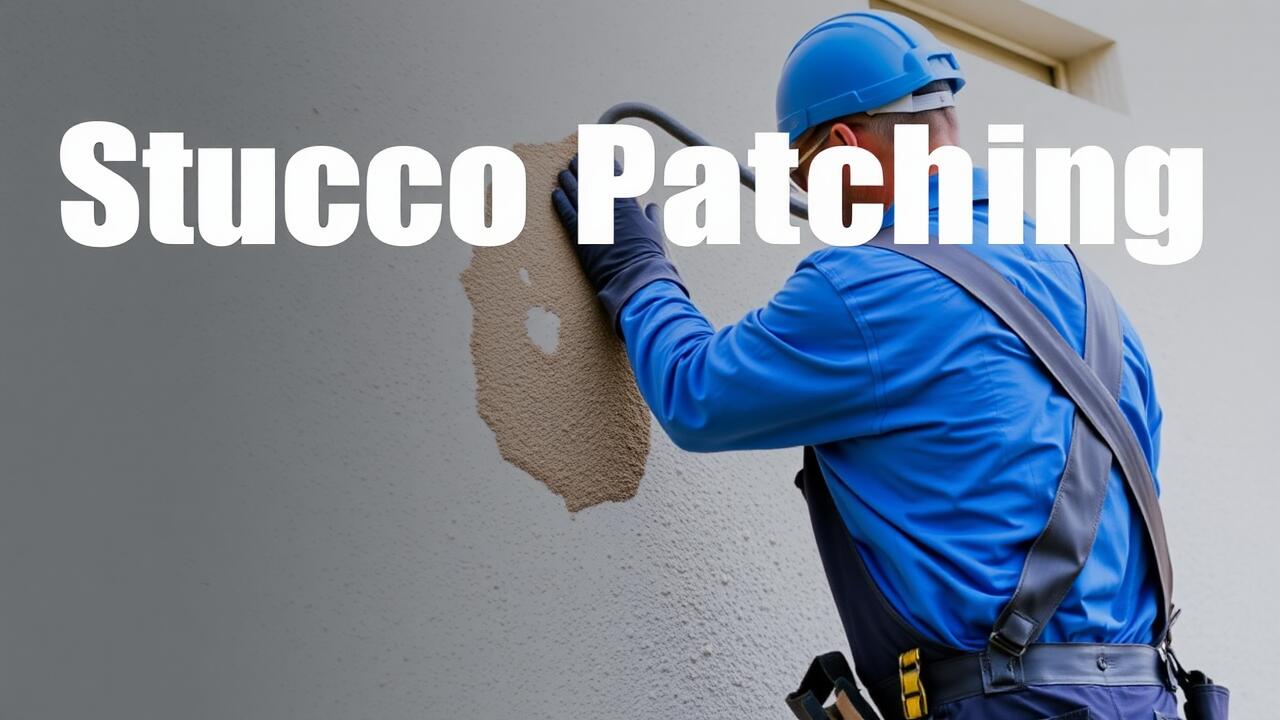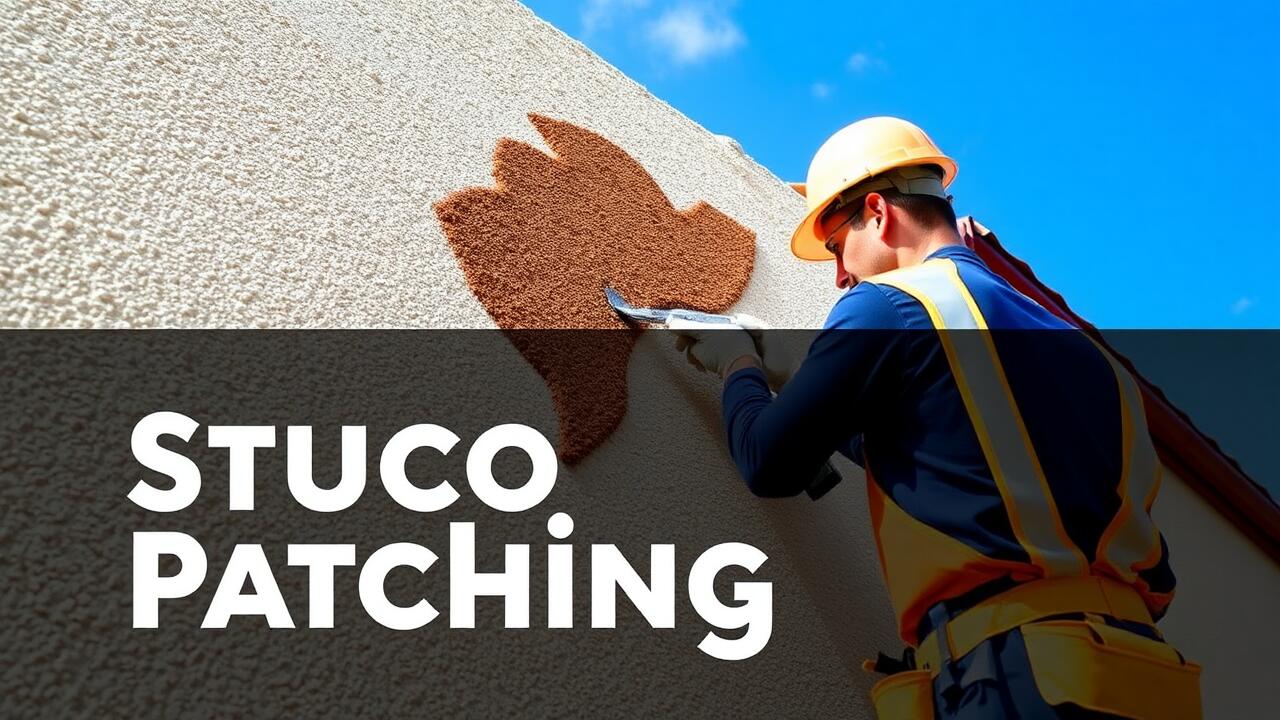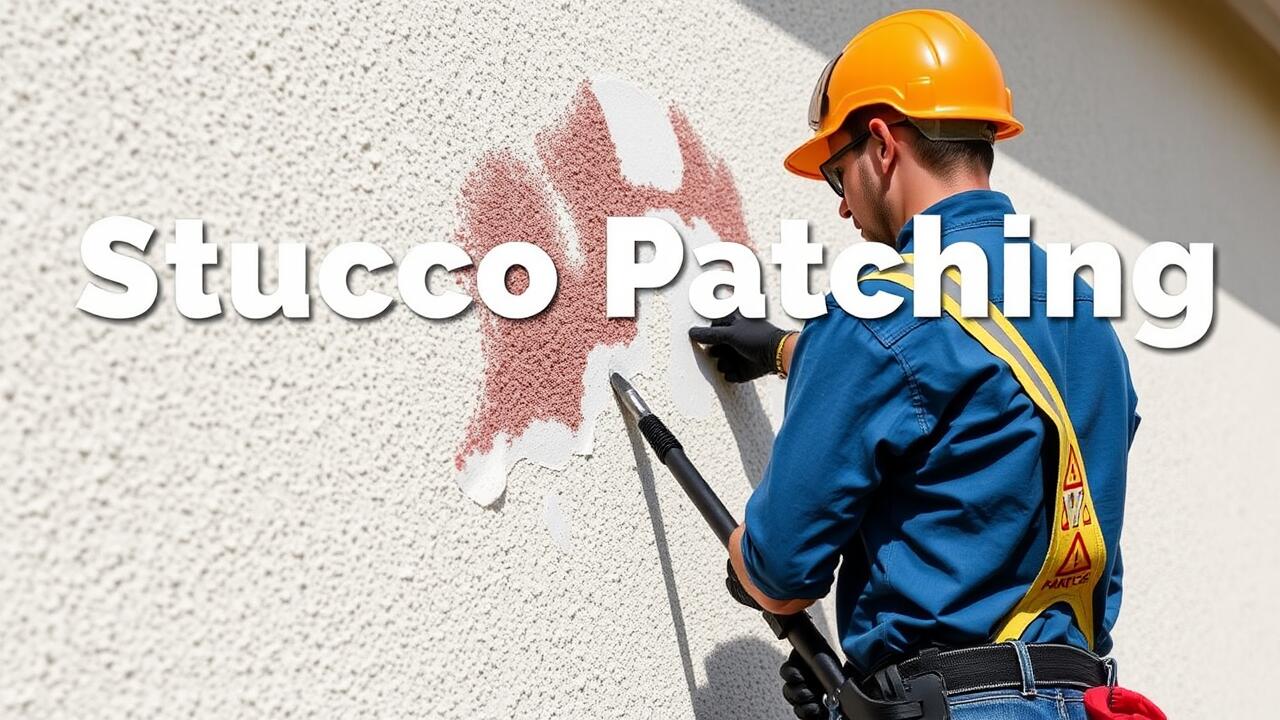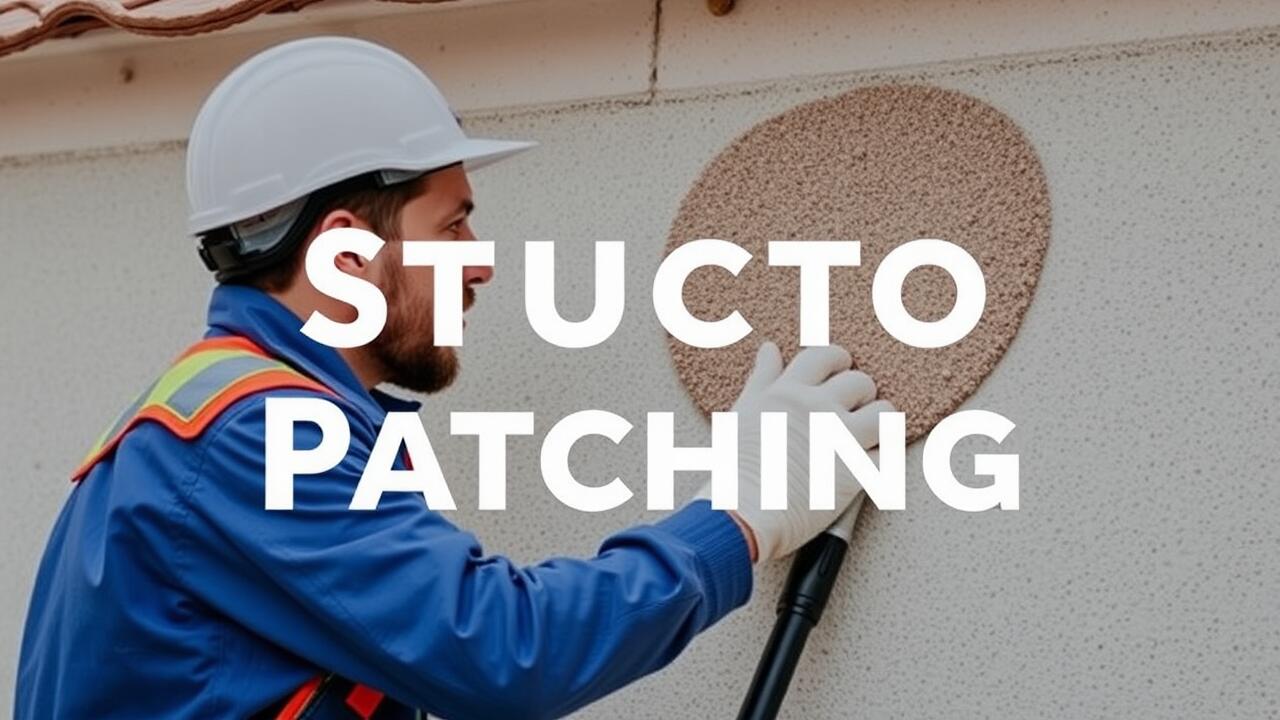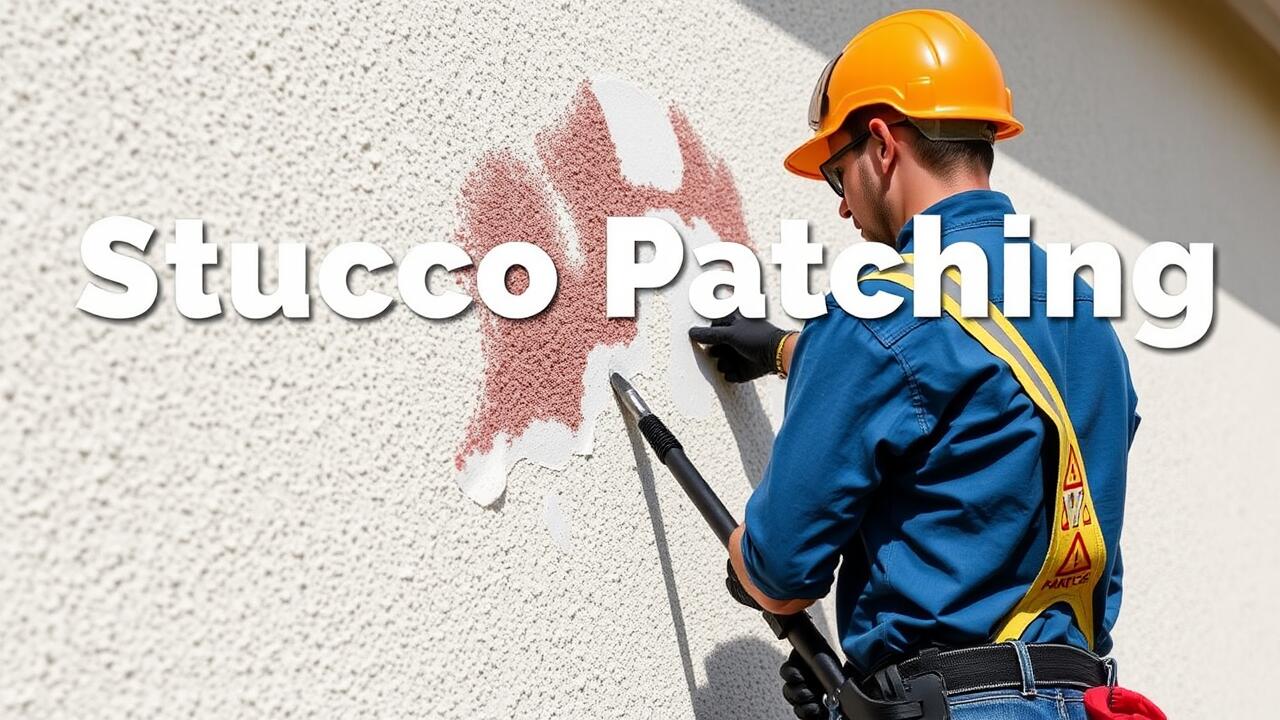
The Role of Climate in Stucco Durability
Climate plays a significant role in the durability of stucco. Extreme weather conditions can lead to cracks, water infiltration, and overall degradation of the material. Regions with high humidity, heavy rainfall, or intense sun exposure may experience greater challenges with stucco integrity. Homeowners concerned about the longevity of their stucco exteriors should consider the specific climate factors in their area.
Proper maintenance, such as regular inspections and timely repairs, is essential for preserving stucco's performance. Seeking professional services like "Stucco Patching near me" can ensure any issues are promptly addressed, preventing more severe damage down the line. By understanding the climate's impact and taking proactive measures, homeowners can extend the life of their stucco facades and maintain their aesthetic appeal.
Understanding How Environmental Factors Impact Performance
Environmental factors play a significant role in the performance and longevity of stucco. Regions with high humidity, heavy rainfall, or extreme temperature fluctuations can exacerbate the weaknesses of traditional stucco systems. Moisture can infiltrate the substrate, leading to mold growth and structural damage. Areas prone to freeze-thaw cycles often see stucco surfaces crack or degrade due to expanded water. Homeowners facing these challenges often search online for "Stucco Patching near me" to find reliable local services that can address any issues before they escalate.
Additionally, exposure to solar radiation can affect the pigmentation and overall appearance of stucco over time. UV rays can break down the binding agents within the stucco, leading to fading and a loss of protective qualities. In areas with intense sun exposure, it's crucial for builders to select high-quality materials specifically designed for such conditions. Regular maintenance and periodic inspections become indispensable in regions where environmental factors pose a higher risk, ensuring that stucco remains a viable and attractive option for home exteriors.
Changes in Building Codes Over the Decades
Building codes have undergone significant transformation over the decades, reflecting advancements in construction technologies and heightened awareness of environmental factors. Early regulations often lacked comprehensive guidelines for stucco applications, allowing for various practices that resulted in inconsistent performance and durability. As a response to the issues that arose, regulatory bodies began drafting stricter codes aimed at enhancing the overall integrity of building materials, especially in regions prone to moisture and severe weather conditions.
These changes have had a direct impact on the quality of stucco installations. New guidelines require thorough moisture management practices and better material specifications, which help prevent common problems like cracking and water damage. Homeowners seeking reliable solutions for maintenance or repair can benefit from consulting services that offer "Stucco Patching near me," ensuring proper adherence to current codes. The evolution of these regulations has played a crucial role in improving both the longevity and aesthetic appeal of stucco structures.
How Regulations Have Affected Stucco Quality
Building codes have evolved significantly over the decades, leading to substantial improvements in stucco quality and application practices. Early regulations did not account for the various environmental challenges that stucco applications might face. As awareness grew regarding issues like moisture intrusion and cracking, updates to the codes began to focus on methods that enhance durability, such as proper drainage systems and water-resistant barriers. These changes have resulted in more resilient stucco systems that can withstand diverse climate conditions.
The shift in regulations has also impacted the way contractors approach stucco installations. Training requirements for professionals have become more stringent, ensuring that teams are well-versed in the latest techniques and materials. For property owners seeking repairs or renovations, finding reliable services such as "Stucco Patching near me" is essential. This local expertise often adheres to updated building codes, guaranteeing better quality and longevity for stucco finishes.
Technological Advances in Stucco Materials
Innovations in stucco materials have led to significant improvements in durability and longevity. Modern formulations often incorporate acrylics and fiberglass, enhancing flexibility and resistance to cracking. These advancements help mitigate some of the issues faced by older stucco applications, particularly in areas with extreme temperature fluctuations. Homeowners can find solutions tailored to their specific climate conditions, ensuring better adhesion and performance over time.
Alongside improved materials, application techniques have evolved as well. The use of advanced tools and equipment ensures a smoother finish and reduces the likelihood of defects during installation. For those dealing with minor repairs or maintenance, searching for “Stucco Patching near me” reveals a range of specialists equipped to manage the latest stucco technologies. These professionals can provide tailored solutions that not only restore aesthetics but also enhance the structural integrity of the stucco surfaces.
Innovations That Address Previous Issues
Recent advancements in stucco materials have led to significant improvements in durability and performance. The introduction of synthetic stucco systems, for instance, has revolutionized the traditional approach. These systems typically feature moisture management components that help prevent water intrusion, a vital issue for older installations. With these innovations, builders can now offer solutions that enhance comfort and longevity for homeowners.
Companies specializing in stucco repair have also embraced new technologies to address common issues faced by older stucco structures. Techniques such as foam insulation and the use of elastomeric finishes provide enhanced flexibility and water resistance. Homeowners searching for “Stucco Patching near me” often find repair services that utilize these modern methods. This evolution in materials and techniques helps ensure that stucco can withstand the environmental challenges it faces, reducing the likelihood of future issues.
FAQS
What years are generally considered bad for stucco applications?
The years primarily associated with poor stucco quality range from the late 1970s to the early 1990s, particularly due to the use of inferior materials and lack of proper installation techniques during that time.
How does climate affect the performance of stucco?
Climate plays a significant role in stucco durability. Areas with extreme weather conditions, such as heavy rainfall or freezing temperatures, can lead to issues like cracking or water intrusion if stucco is not applied correctly.
What changes in building codes have impacted stucco quality?
Over the decades, building codes have evolved to include stricter regulations regarding moisture barriers, drainage systems, and material standards, which have greatly improved the performance and longevity of stucco applications.
What innovations have been made in stucco materials?
Recent technological advances have led to the development of more durable stucco materials, including synthetic stucco and modified cement mixtures that address previous issues like cracking and moisture retention.
How can I tell if my stucco is from a bad era?
Signs of problematic stucco include excessive cracking, water damage, mold growth, and peeling paint. Consulting with a professional can help determine the quality and age of your stucco.
